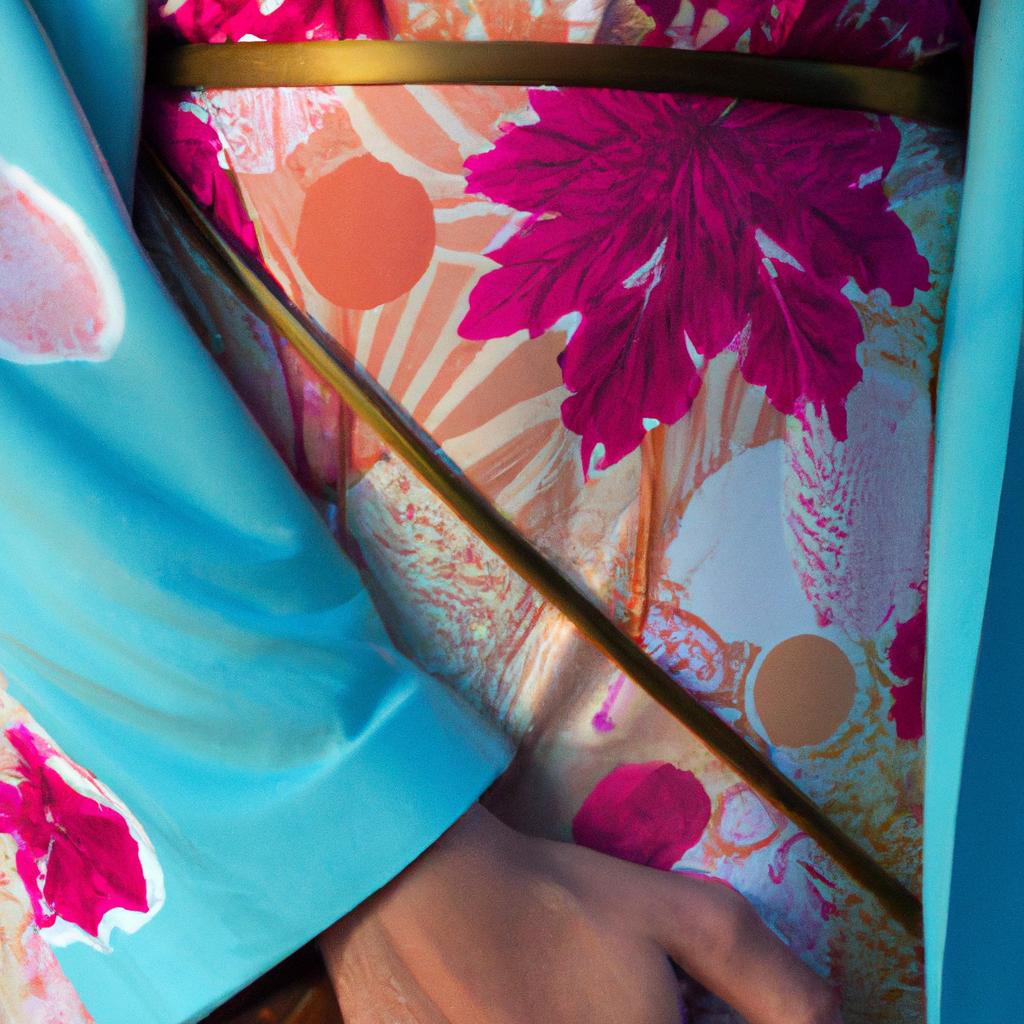Introduction: The Little Black Dress
The Little Black Dress (LBD) is a timeless fashion classic that has been around since its creation by the iconic fashion designer Coco Chanel in 1926. Since its creation the LBD has revolutionized and drastically changed the fashion industry, making a lasting impression and becoming one of the most beloved and enduring fashion staples of all time.
The LBD is a simple, versatile and elegant look that has become associated with confidence, sophistication and class. It is a classic look that can be worn for any occasion, from formal to semi-formal, and for all seasons. It never goes out of style and is always in fashion, making it a must-have piece in any wardrobe.
This guide will take an in-depth look at the history of the LBD, from its beginnings in the 1920’s to its impact on fashion today, and explore the importance of Coco Chanel’s iconic style in the fashion world.
History of Fashion Before and Leading Up to the Little Black Dress
Before the iconic Little Black Dress entered the fashion world, fashion consisted largely of bright colors and voluminous fabrics. This was especially true in the late 19th century when many women wore ornate gowns in deep reds and purples. However, over time the trends shifted towards more muted colors, particularly black. By the 1920s, black had become a popular fashion choice for wealthy socialites looking to make a statement.
Coco Chanel was one of the most influential figures of her time, and she had a particular knack for making fashion accessible to all. She embraced the idea of black clothing, turning it into something that could be seen as chic and elegant. Chanel is credited with introducing the Little Black Dress in 1926, which revolutionized the way people viewed fashion and style.
The simple yet stylish design of the Little Black Dress made it easy to adapt to different body types and occasions. It was considered a wardrobe staple due to its timelessness. In the following decades, many other designers followed in Coco Chanel’s footsteps and began to incorporate simple black designs into their collections.
Overview of Coco Chanel and her Work Leading Up to the Little Black Dress
Gabrielle Bonheur “Coco” Chanel was born on August 19, 1883 in Saumur, France. She was an orphan, her mother having died when she was just 12 years old. Coco went to work in a local tailor’s shop at a young age, where she learned to sew and design clothing. This skill eventually led her to Paris, where she opened her first fashion boutique in 1910.
In the years leading up to the creation of the Little Black Dress, Coco Chanel created many fashion staples that are still popular today. She introduced jersey fabric to haute couture, and designed rounded collars and pockets to replace the stiff and structured ones from the Victorian era. She also created women’s suits made of lightweight fabrics, culottes, and long skirts that ended at the ankles. All of these styles broke away from the restrictive clothing of the Victorian era, and allowed women to move freely in their clothing.
In the mid-1920s, Coco Chanel was inspired by Vogue magazine’s call for a new, flat and lightweight dress that could be worn day or night. She designed the Little Black Dress in 1926, which featured a simple, yet elegant design, a high neckline, and a knee-length skirt. The dress was made of lightweight black jersey fabric, and it became a symbol of liberation for women in the 1920s.
Understanding the Anatomy of the Little Black Dress
Coco Chanel’s little black dress was arguably the most influential piece of clothing of the 20th century. It earned iconic status because its simple style and timeless elegance revolutionized fashion forever. So, what made the little black dress so groundbreaking?
The little black dress featured a sleek silhouette, with a thigh-length hemline and adjustable straps. The cut was designed to flatter any figure, and the adjustable straps allowed the wearer to adjust the length of the dress. This afforded women greater freedom of movement and self-expression—something previously lacking in fashion at that time.
The fabric used for the dress was another key feature of the design. Coco Chanel chose black crepe de chine fabric, which had a dramatic contrast to the more frilly, lace-trimmed dresses that were popular back then. The little black dress broke away from traditional conventions, and ushered in a new era of modern women’s fashion.
The Impact of the Little Black Dress
When Coco Chanel released the Little Black Dress in 1926, it completely revolutionized fashion. It’s timeless style and chic elegance made it an instant sensation, and it quickly became a staple of every woman’s closet. From the everyday fashionista to the most influential celebrities, the Little Black Dress has been seen everywhere.
To get more insight into the impact of the Little Black Dress on fashion, we spoke with fashion industry professionals. They all had unique perspectives on how the Little Black Dress has influenced their work. Here are some of their thoughts:
- “The Little Black Dress is such an iconic piece of fashion—it’s timeless and always modern. I think its versatility is really great, because it can be dressed up or down to suit any occasion. It’s been a key part of my designs since I started designing.” – Anna K., designer
- “Coco Chanel changed the game when she introduced the Little Black Dress. It’s a classic that never goes out of style, and it’s inspired many of my collections over the years. It’s an essential piece for any wardrobe.” – John M., designer
- “The Little Black Dress is a statement piece that adds sophistication and elegance to any look. I love using it as a base for more creative designs, because it gives you so much room to play and experiment.” – Sarah C., fashion stylist
These experts have been delighted by the impact Coco Chanel had on fashion with her iconic design. It’s clear that her vision was ahead of its time, and it continues to inspire people today.
Exploring the Relationship between Trends and Coco Chanel’s Legacy
Coco Chanel had a profound influence on fashion when she unveiled the Little Black Dress in 1926. This revolutionary piece of clothing has withstood the test of time, still appearing on catwalks and in wardrobes around the world. The impact of this dress was to create a timeless style that bridged trends and timelessness.
So how did Coco Chanel achieve this feat? By looking at how trends have changed up to the present day, we can gain insight into the lasting legacy of Coco Chanel’s Little Black Dress. Before Coco Chanel came along, the fashion world was focused on creating pieces that were very ornamental and labor-intensive—dresses with complex beading, embroidery, and intricate lace designs. Coco Chanel challenged this status quo and created something simpler yet elegant.
Her simple design meant that it could easily fit within any trend that came along in the years since its creation. Rather than being tied to a specific trend, the Little Black Dress could adapt to changes in style while still maintaining its timeless look and feel. For example, a Little Black Dress could easily be modified to suit a 1950s skirt suit look as well as a 1970s jumpsuit look. This versatility has allowed the Little Black Dress to remain fashionable throughout the decades.
The connection between the Little Black Dress and fashion trends goes beyond Coco Chanel’s original vision. Many designers have taken inspiration from her iconic style and adapted it for their own collections. This has seen the Little Black Dress become a staple of high society fashion, with iconic celebrities such as Audrey Hepburn and Kate Moss wearing it.
These examples demonstrate how Coco Chanel’s Little Black Dress has become a timeless piece that bridges the gap between trends and timelessness. It’s a piece of clothing that is still relevant to the fashion world today, and will likely remain relevant for many years to come.
Examples of Iconic Celebrity Looks Featuring the Little Black Dress
When it comes to iconic celebrity looks, the little black dress has been a staple in wardrobes for decades. From Audrey Hepburn to Rihanna, celebrities have used the power of the little black dress to make a lasting impression on the red carpet and beyond. Here are some famous looks that have showcased the timelessness and versatility of the little black dress.
- Audrey Hepburn first captivated audiences in “Breakfast at Tiffany’s” wearing a sleeveless little black dress with gloves.
- In 2009, Amy Adams attended the Academy Awards in a beautiful deep V-neck gown with lace detailing.
- Angelina Jolie wore a simple strapless sheath dress to the 2010 Golden Globe awards.
- In 2016, Blake Lively wowed the crowd in a plunging velvet gown with bow detailing.
- Singer Rihanna shone bright at the 2018 Grammy awards in a black beaded off-the-shoulder mermaid gown.
These classic looks demonstrate how the little black dress can be instantly transformed into something glamorous and unique through careful accessorizing and styling.
Inspiration from Coco Chanel
For nearly a century, Coco Chanel’s Little Black Dress continues to inspire other designers with its timeless elegance. The dress has served as a fashion staple for many women, making it a classic go-to piece for both special occasions and everyday dressing. After its original debut in 1926, the Little Black Dress was quickly adopted by many other designers who embraced the chic look and elegant silhouette.
The LBD’s influence on fashion can be seen in many iconic pieces of clothing from leading figures in fashion such as Christian Dior, Vivienne Westwood and Jean Paul Gaultier. Each designer took the classic dress and altered features like necklines, hemlines, sleeves and fabrics to create their own unique designs.
In recent years, the classic style of the Little Black Dress has been modernised by young, up and coming designers, who have added new elements such as ruffles, patterns, sequins and more. These modifications to the dress have resulted in a variety of different looks, proving the timelessness of Coco Chanel’s design.
The Little Black Dress is a reminder of Coco Chanel’s influence on fashion and the continued demand for her timeless designs. As the dress can still be seen on the runway, in magazines and on fashionable celebrities, it is clear that Coco Chanel’s legacy lives on.
Connection between the Little Black Dress and High Society Fashion
When one thinks of high society fashion, the Little Black Dress often comes to mind. Coco Chanel’s iconic design revolutionized the idea of what could be considered formalwear for women in the 1920s. She broke free from the corsets and long skirts that had been pervasive in fashion prior to her designs, and instead favored more comfortable and functional styles.
For high society events such as society balls and opera performances, the Little Black Dress became a wardrobe staple—it was sophisticated and classy, but also allowed ladies to move and dance freely. Its timeless elegance made it an instant classic, and it quickly gained favor with many socialites and celebrities who wanted to make a statement at their events.
The Little Black Dress was easy to accessorize, and did not impose any limitations on the wearer. Whether it was paired with a chic hat and gloves or some bold jewelry, the dress could be tailored to any woman’s tastes. Meanwhile, its neutral color made it suitable for any occasion—from formal dinner parties to less formal outings like garden parties.
Though Coco Chanel initially designed the Little Black Dress for practicality, it eventually became synonymous with high society fashion and the glamour of the upper classes, and has endured as a fashionable staple for decades.
Present-day Iterations of the Little Black Dress
The Little Black Dress has been a staple in the fashion world since it was created by Coco Chanel in 1926, yet the style continues to evolve with every decade. The simplicity and timelessness of the Little Black Dress makes it versatile enough to be transformed for each new era, while still maintaining some of the key features that made it revolutionary when it was first designed.
Today, there are endless variations of the Little Black Dress, ranging from classic tweed pieces andsheath dresses to more modern styles such as faux leather dresses, sequin dresses, and bodycon minis. These present-day iterations of the Little Black Dress embody the same principles of Coco Chanel’s iconic style—simplicity, elegance, and femininity.
At the same time, the modern Little Black Dress still retains an air of mystery and sophistication which make it one of the most sought-after items in any wardrobe. Whether it is for a night out on the town or a more formal event, the Little Black Dress can be easily dressed up or down to suit any occasion. The timelessness of the Little Black Dress makes it a classic wardrobe staple that will never go out of style.
The Timelessness of the Little Black Dress
The Little Black Dress has been part of the fashion landscape for almost a century, and its timelessness is largely due to the genius of Coco Chanel. The classic features she designed – from the simple neckline and flattering silhouette to the stark black color – all combine to create a dress that is both timeless and iconic.
The ability of the Little Black Dress to transcend trends has meant that generations of women have been able to rely on it for any occasion, whether it’s a formal event or an evening out with friends. Its versatility has also meant that celebrities of all ages have been able to use it to make a statement on the red carpet, and designers have taken inspiration from its timeless design when creating their own collections.
The combination of style and simplicity that Coco Chanel created in 1926 has left a lasting impression on the world of fashion, and has made the Little Black Dress a wardrobe essential that will never go out of fashion.
Conclusion: Reflection on the Legacy of Coco Chanel and Her Lasting Impact on Fashion
Coco Chanel has left an indelible mark on fashion with her creation of the Little Black Dress. Its timeless elegance has made it a staple in wardrobes around the world, a symbol of sophistication and stylishness that will never go out of fashion. Coco Chanel showed us that fashion should be accessible to all women, no matter their class or background. She challenged traditional gender roles in a patriarchal society, and paved the way for modern expressions of femininity. Her legacy continues to live on in the garments we wear today and the trends that come and go. As time passes, Coco Chanel’s influence only grows, and her Little Black Dress remains a symbol of feminine empowerment and a reminder of her vision for a more inclusive and diverse fashion industry.
comments: 0




